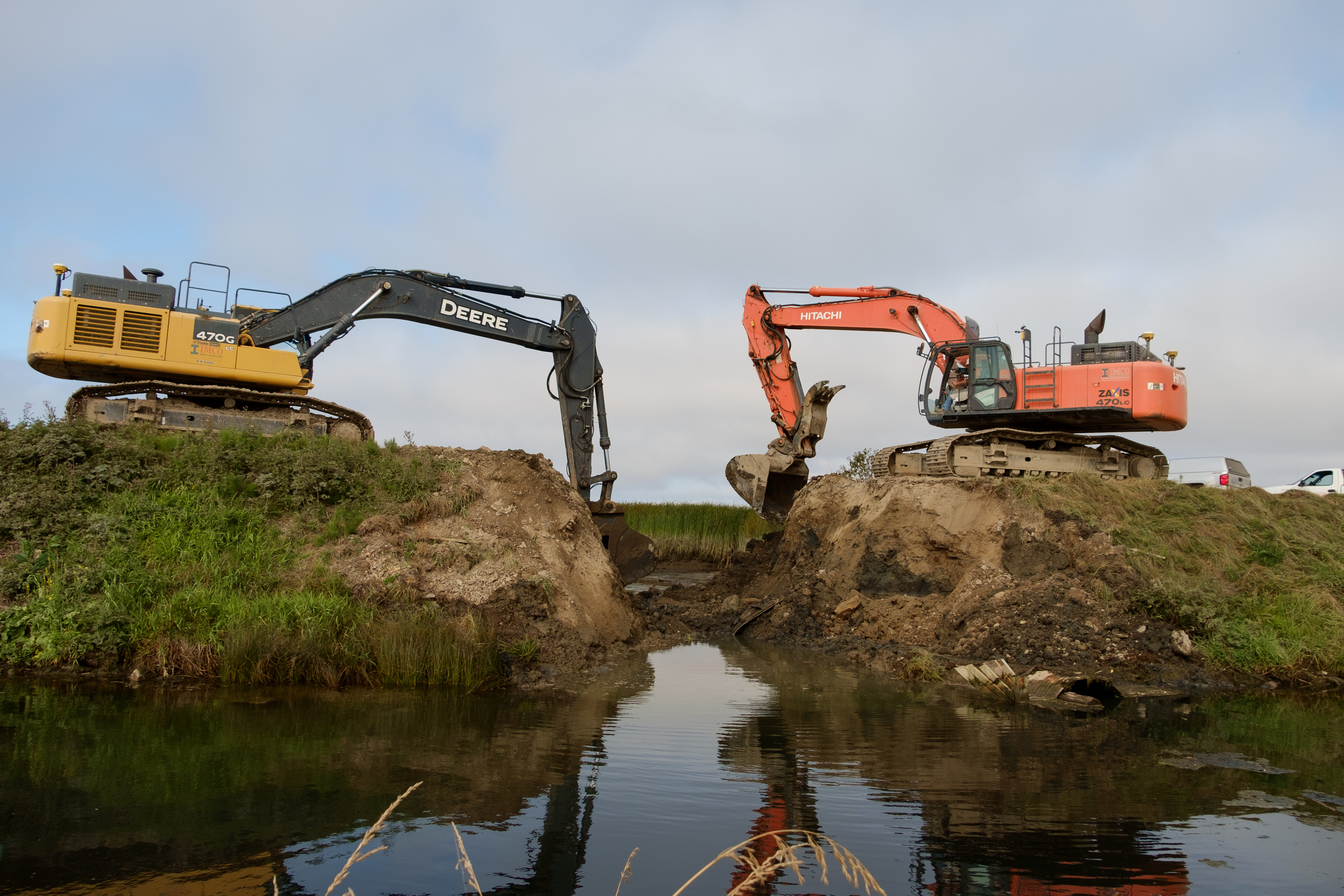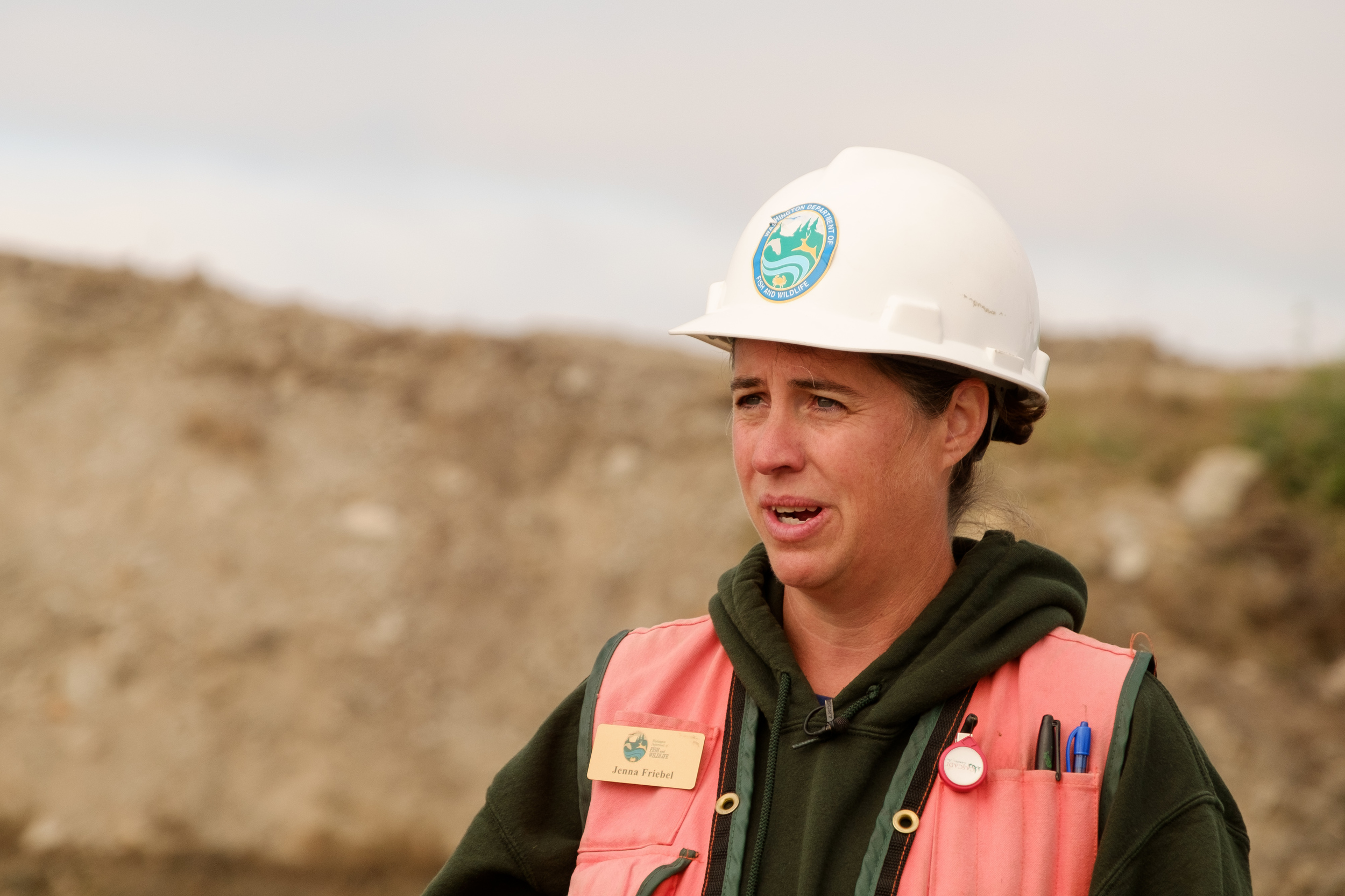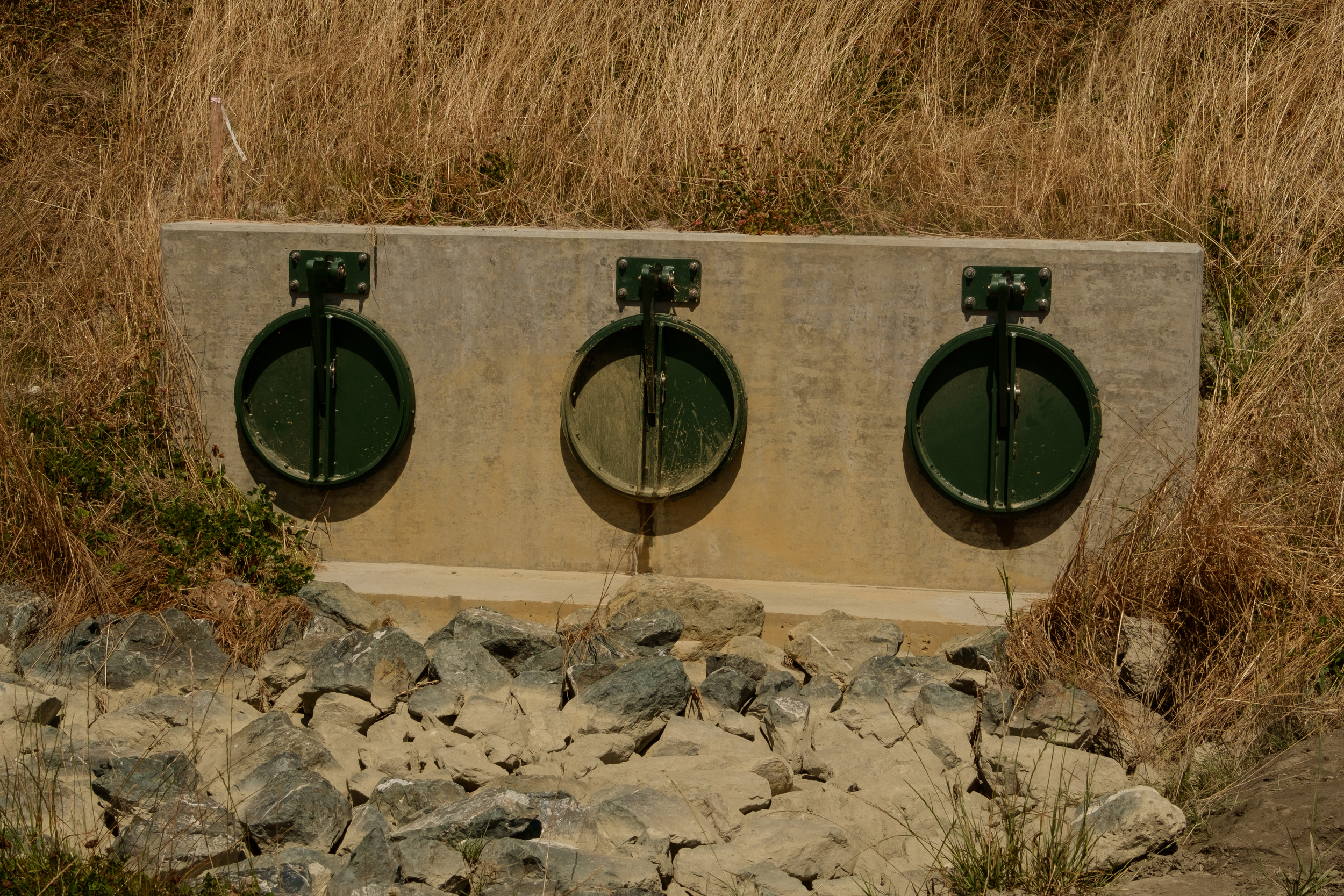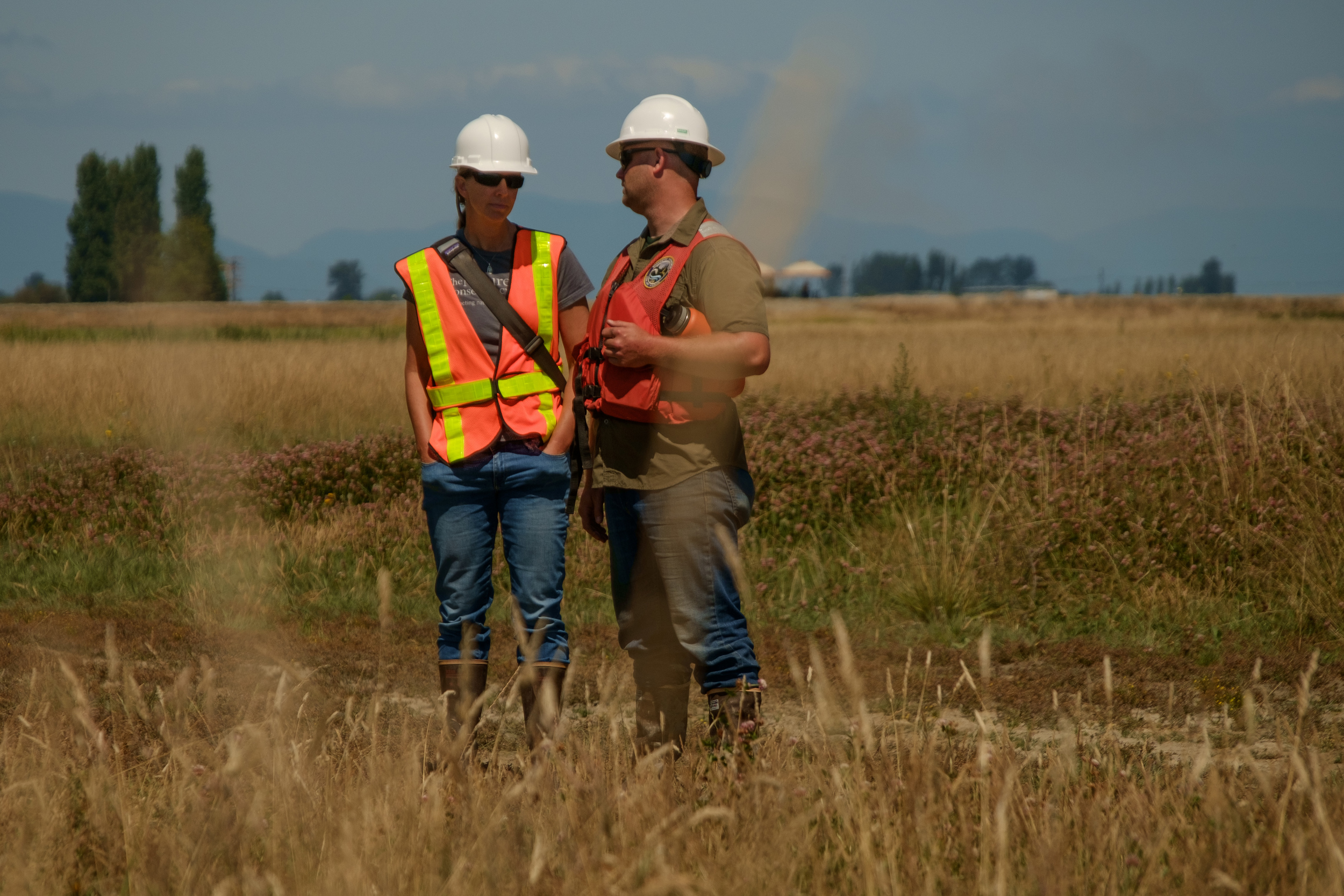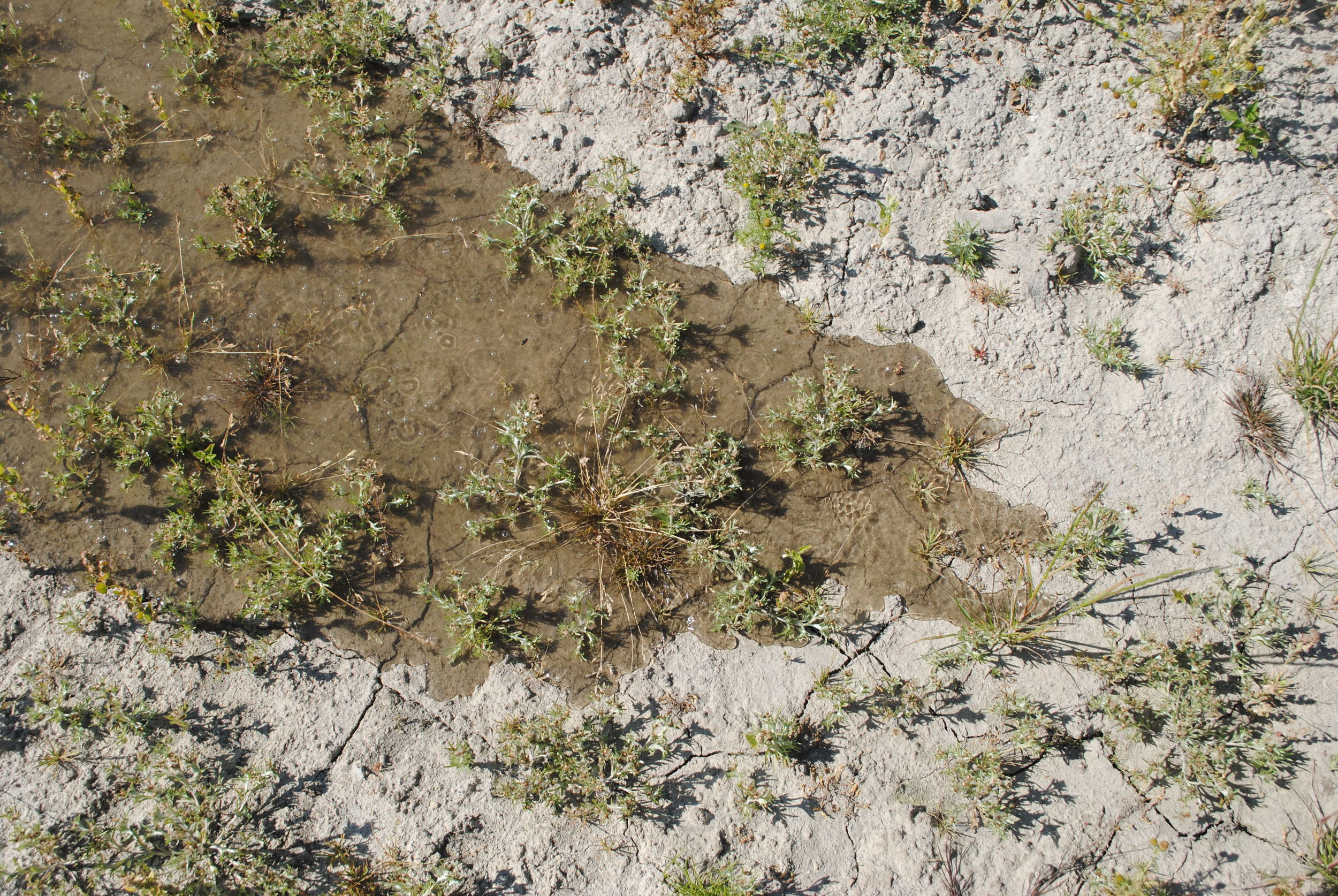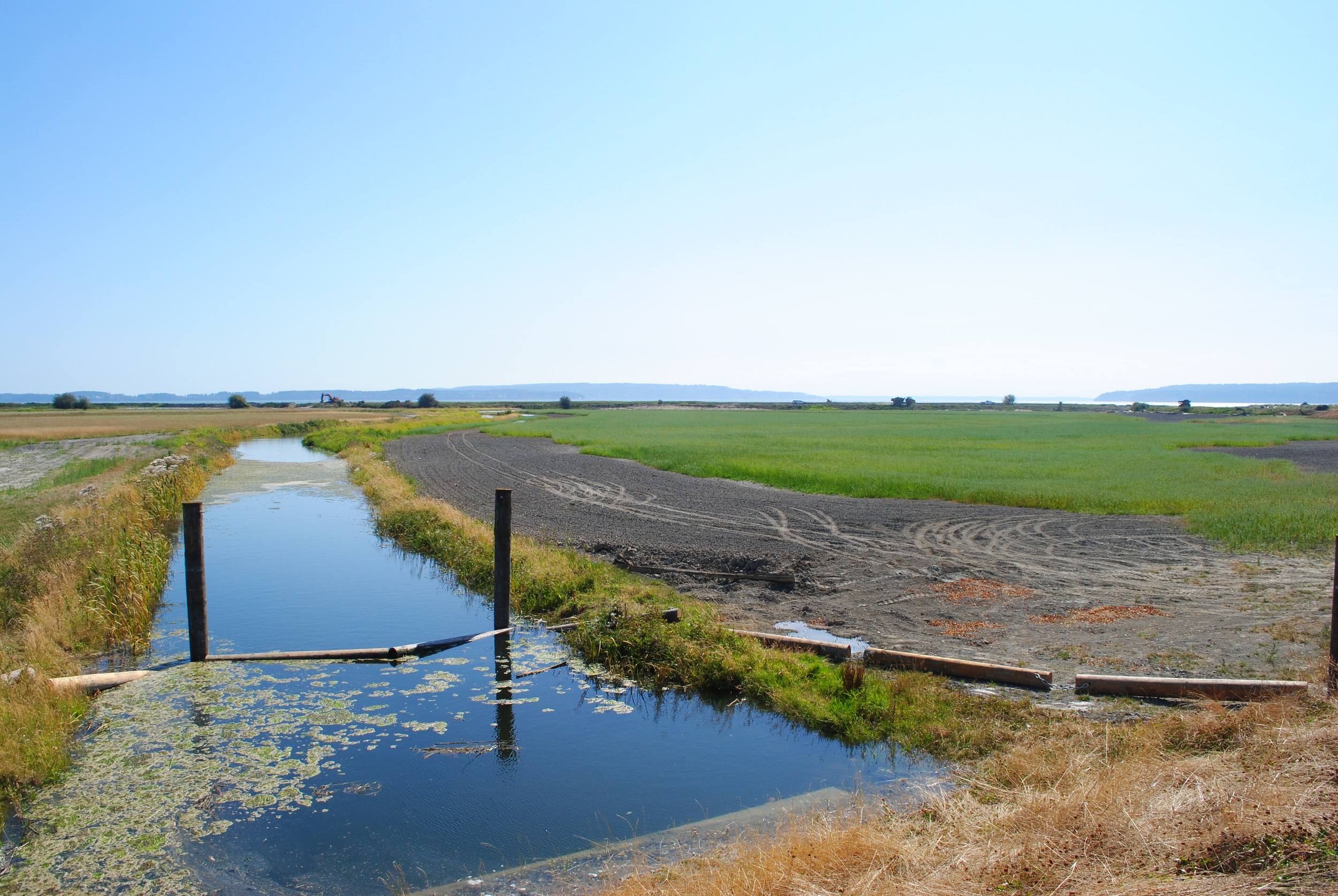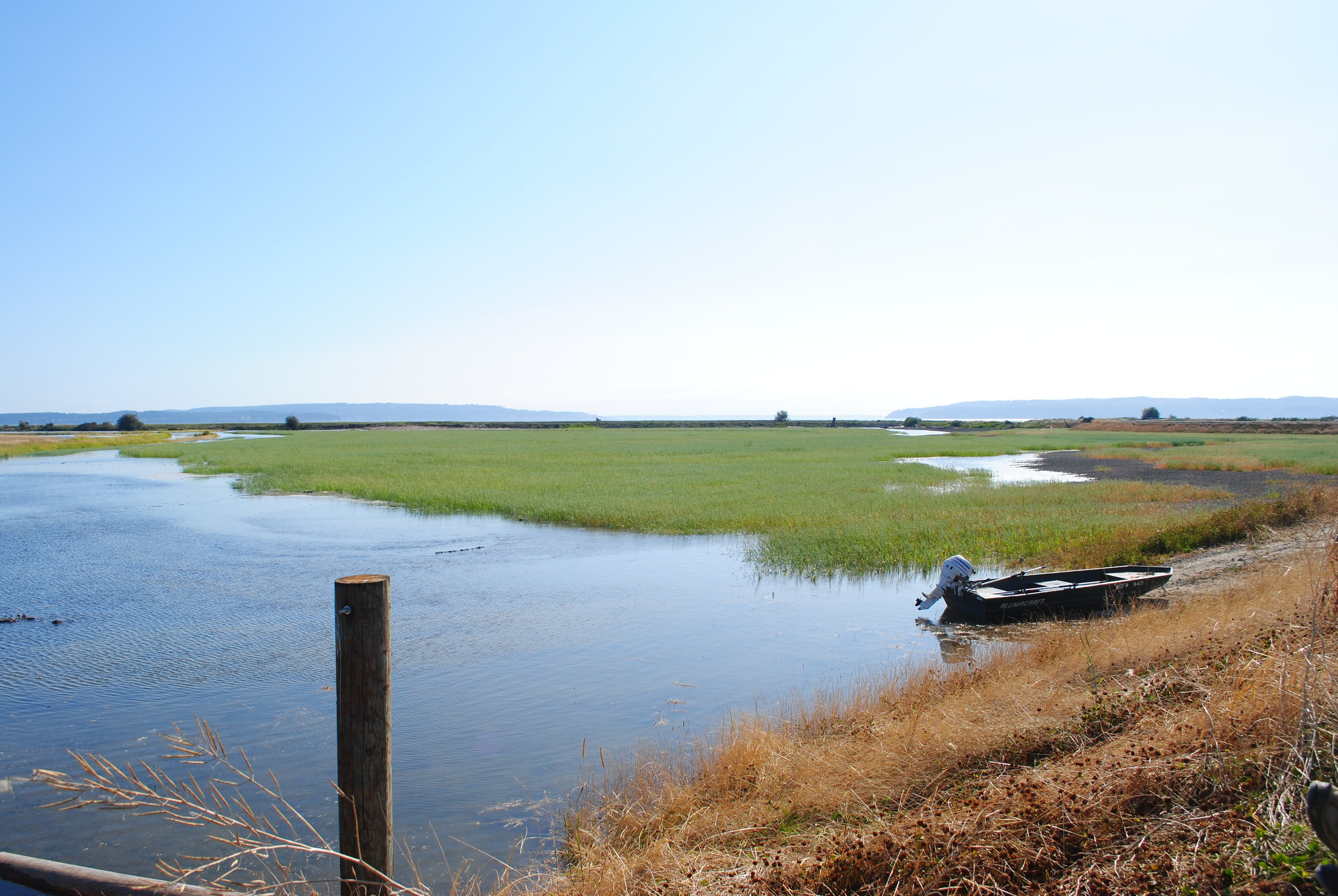Written & photographed by Julie Morse, Regional Ecologist
For thousands of years it was an estuary. Then for 100 years it was farmland. Now, it’s estuary again.
More or less halfway between the mouths of the North Fork and the South Fork of the Skagit River, Fir Island Farm sits on the edge of Puget Sound with stunning views of Mount Baker. For the last 100 years it has produced potatoes, corn, wheat and other crops and drawn visitors from far away every winter to see the flocks of thousands of Snow Geese that congregate here in the winter
The Skagit River itself defines this place. It’s the largest river entering Puget Sound, fed by the glaciers of Mount Baker and the North Cascade peaks it supports all five species of Pacific Salmon. For Skagit’s Chinook Salmon, a threatened species protected under the Endangered Species Act, estuary habitat at the mouth of the river is a limiting factor in their recovery. Tidal marsh habitat here is a quarter of what it was historically. The Fir Island Farm restoration of 131 acres alone is projected to increase smolt production by at least 65,000 every year.
From a farmer’s perspective, it’s always painful to see farmland lost, whether it’s for salmon restoration or development of a new sub-division in rural areas – the impact on their bottom line is the same. Farmer’s need a critical landmass to maintain a viable economy, and particularly in the Skagit -located halfway between Seattle to the South and Vancouver to the North, development pressure in recent years has encroached from all directions. Add the importance of the Skagit estuary for salmon recovery projects, and combined the pressures on this prime lands are enormous.
And yet, local farming groups support the Fir Island Farm restoration because the project design includes critical improvements to their infrastructure. A state-of-art pump house and new setback dike will provide improved drainage capacity and flood protection for future sea level rise and storm surge conditions thus serving as a model for much of Western Washington. This project is also supported because it enables the local diking districts’ to make repairs and do maintenance on their flood and drainage systems. It also prioritizes restoration of state owned public lands, rather than private farmland.
The Fir Island Farm restoration project is a model of TNC’s approach to conservation and restoration in the complex and populated landscapes of Puget Sound. Not only does the project design include drainage and flood improvements for local farmers, it also retains a portion of farmland to manage for Snow Geese. The project design accommodates future sea level rise and is designed to protect the adjacent lands from coastal storm surge, is a model for adapting to climate change. Designing and implementing complex multiple benefit projects like this is no small feat; and our hats go off to WDFW’s Project Manager Jenna Friebel and her team.
Monday afternoon as we stood on the new dike and watched the first flood tide in 100 years return to Fir Island Farm, I think all of us TNC staff felt somewhat in awe, and incredibly humbled. Humbled to be alongside such a large group of partners - all who have had some piece in making the project happen. And in awe of how dynamic this place is. What we witness today is just a snapshot in time; it’s a work in progress.
Now it’s time for Mother Nature to take over. To start excavating new channels and bringing in large wood to create habitat complexity for salmon fry, to restore sediment flow that will create rich muddy intertidal stopover sites for migratory shorebirds, and continue restoring this incredible piece of the Skagit estuary.






